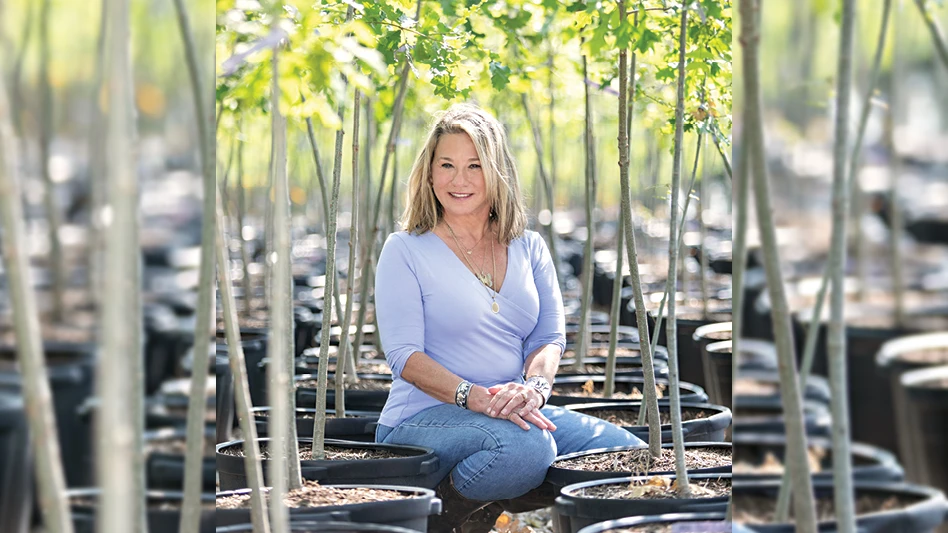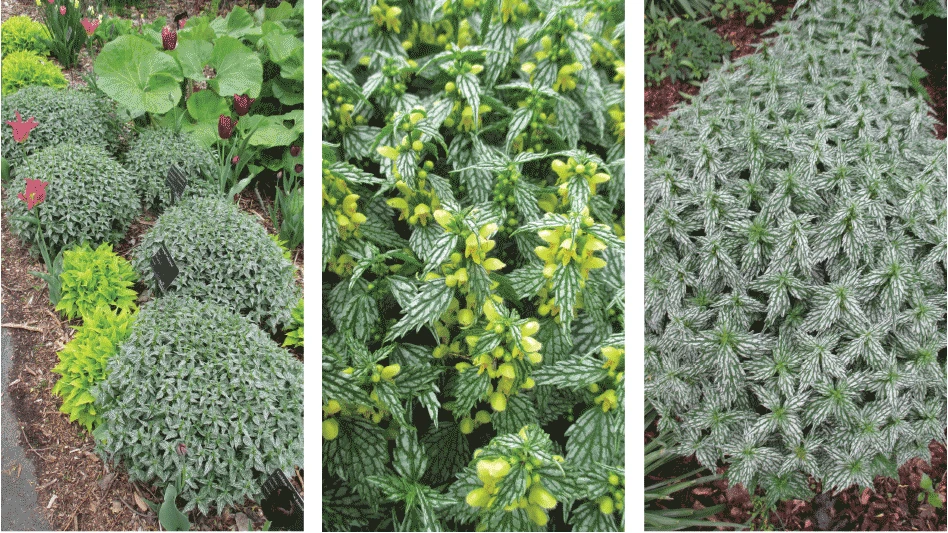_fmt.png)
Robert E. “Buddy” Lee is the director of plant innovations for Plant Development Services, Inc., but he’s best known as the plant breeder behind the wildly popular Encore Azaleas. He has 30 years of experience in nursery management, breeding, propagation and new plant development, and he travels internationally speaking to horticulture groups.
He’s been collecting plants since the first grade, but he always had a special fascination with one in particular.
“Azaleas just seem to have a magical trait to them, that people were drawn to them when they bloom,” he says.
The tremendous success of his behemoth brand hasn’t given him any illusions about the industry. And he certainly doesn’t take that success for granted.
“People come out of college and tell me they want to do plant breeding,” he says. “I tell them ‘Don’t quit your day job.’ It’s not something that pays off immediately. And it may never pay off.”
The challenge
Lee believes in the potential of plant breeding, especially with advances in equipment and a market that is more accepting of branded plants than it was when he got
Many people are passionate about plants, but sustaining that love while still somehow making a decent living can be a difficult proposition.
“When their friends are making three times as much as them but they’re working twice as hard, sometimes the passion fades away,” he says. “If they aren’t passionate about it, or they don’t want to sacrifice, they’ll probably drift away from it anyway, because it’s hard.”
Savannah Springs Nursery, the wholesale production nursery Buddy started in the early 1980s, did well enough. But growers all over were losing money on his favorite crop, the azalea, because
Buddy continued plant breeding, evaluation
Once he was able to focus on his hobby of growing and propagating azalea, his main goal was to create a cultivar that would cut through the overstocked, overproduced basic azalea. At that time, growers and retailers were scaling back on azalea, not adding more to their production plans. Buddy needed something special to set his azalea apart. He envisioned a plant that would bloom in multiple seasons, giving consumers a first act, a second act
How Encore happened
The genesis of this project happened in the early
“He had sponsored a plant expedition into Taiwan, and for his money, he got a little cutting,” Buddy says. “He didn’t even like azaleas, but he put it beside his veterinarian shop and it just took off like crazy. As soon as I saw that, I said if I could cross this with the other ones, maybe I could develop a crop with a consistent bloom and know when it would bloom.”
Buddy already had a large supply of azaleas with a tendency to bloom in the fall from his own collection.
“The only problem with the ones that have a tendency to bloom in the fall is they were very unpredictable with when they would bloom,” Buddy says. “Sometimes they would bloom in September, sometimes October, and sometimes they wouldn’t bloom until Thanksgiving, depending on the weather.”
When Buddy got his hands on R.
Some breeders limit the number of hybrids, but Buddy’s method runs counter to that strategy.

“I do overkill on the plants,” he says. “My philosophy was always to pot up as many seedlings of a hybrid as I can.”
Another part of his breeding process is to try to use only a small amount of insecticides and subject the plant to whatever adverse weather conditions that Mother Nature dreams up.
“I’d pot them up, and they’re left to their own devices,” he says. “As time goes on and the environmental factors hit them, and they’re left out in the winter, never covered, you lose a lot of them. The weaker ones are lost to environment or disease.”
Buddy selected from the survivors. Next, he chose the best bloom colors. There were so many oranges, a lot of the more common shades were discarded. From there, the seedlings moved up to 4-inch pots, then to 1-gallon containers. In that first group, Buddy had 11,000 azaleas in 3-gallon containers. Only 12 of that group went forward in the program, and only seven of those plants were eventually named.
An ill-timed freeze can wreak havoc on azalea. The Louisiana heat is legendary, but the state’s climate can also test a plant’s cold resistance. Buddy keeps all new plants he’s testing out in the open, uncovered.
“Even in the South, cold is fairly brutal on an azalea,” he says. “But if I see split bark, those plants fall off the wagon.”
Sometimes a plant has all the attributes that earmark it as a future best-seller, but it falls flat in production. Lee says every breeder has had those plants, the ones that make you ask what might have been.
“I’ve had several plants that would be great, but when mass produced they didn’t do what we wanted them to do,” he says.
But that’s OK. Because if the plant couldn’t handle the rigors of being grown for production en masse, it wouldn’t have been a hit anyway.
“That’s the best test,” he says. “When you see 200 of them in a row, in bloom and growing, that’s really the final test. Because not only do you want a plant that does well for the consumer, but it needs to be a good production plant. If the wholesale growers can’t grow
The future
Even with more than 30 named azaleas, patented as part of the Encore program, Buddy still believes there is more to do in the field of azalea breeding.
For instance, there are several traits he’s currently trying to bring out in his breeding. He sees a need for azalea that
“I’m looking for double blotches with the blotches all the way in the center, striped, or different patterns in the flower bloom,” he says. “I’m also working on incorporating yellow color into the evergreen azaleas, which don’t really have yellow or blue color, but they have first cousins in the rhododendron world that have that. So there is some interspecific breeding work there.”
Those are traits he’s been trying to make happen for a long time – “pie in the sky” work. Generally, he looks for something out of the ordinary. Oddities that could spring up in all these seedings. Many of these traits from vegetative sports aren’t transmitted in hybridization; they aren’t at the right chromosome level. In those instances, he continues his work on the seedlings that carry those unique traits.
“One plant may have a lot of the traits I want, but it won’t bloom,” he says. “That destroys the whole concept of an azalea if it doesn’t bloom.”
_fmt.png)
However, these plants do still set a seed capsule. So those non-bloomers can still be
Last year, Buddy’s Transcend Nursery had 33,000 seedlings. He selects out of 4-inch containers, not gallon pots.
“What I’m looking for is certain traits, traits that are very obvious but there’s a low ratio of seeing ‘em,” he laughs.
After that, all those seedlings will go in for another test, for high alkalinity and salt tolerance.
“It’s an easy way to say I’m going to kill them all,” he jokes.
Buddy is past president of The Azalea Society of America, past president of the Louisiana Nurseryman’s Association Region III, and he is an active member of the International Plant Propagators Society and the Louisiana Nursery and Landscape Association.
In 2000, the Louisiana Nursery and Landscape Association recognized Buddy Lee’s significant contribution to the industry by presenting him with a Professional Achievement Award; and in 2007, the Azalea Society of America awarded him the Society’s Distinguished Service Award. And just this year, he received the prestigious Don Shadow Award of Excellence from the Southern Nursery Association. This award is presented to an individual, corporation or organization that excels in the development, promotion
Even after all the accolades, he keeps evaluating plants, looking at them from different angles.
“To see all these seedlings bloom, and to see all the variations, to me it’s just awesome,” he says. “When you’ve got thousands of seedlings and you’re slowly walking through and tagging the one you want to pull out… that, to me, is a really good feeling.” NM
For more: www.plantdevelopment.com

Explore the April 2018 Issue
Check out more from this issue and find your next story to read.
Latest from Nursery Management
- New book explores plants that thrive in Rocky Mountains
- American Floral Endowment establishes Herman Meinders Memorial Tribute
- These companies are utilizing plastic alternatives to reduce horticultural waste
- NewGen Boxwood added to Proven Winners ColorChoice line
- Terra Nova releases new echinacea variety, 'Fringe Festival'
- American Horticultural Society names winners of 2025 AHS Book Awards
- Nufarm announces unified brand
- American Horticultural Society announces winners of 2025 Great American Gardeners Awards





